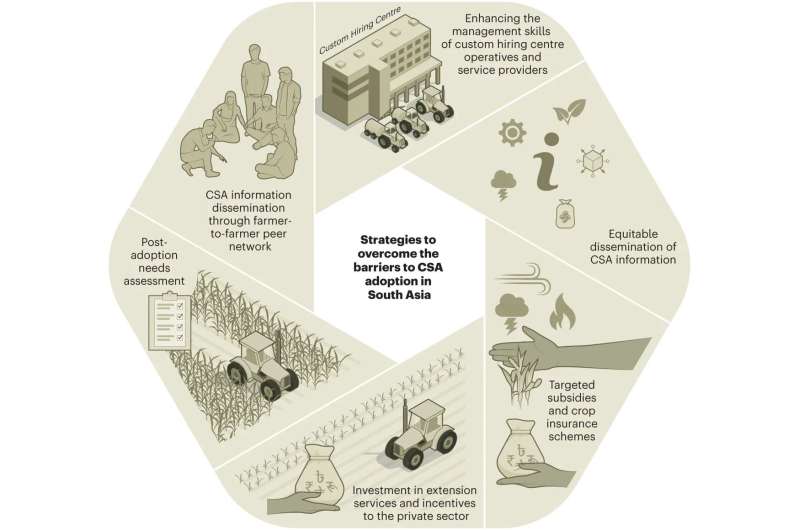This article has been reviewed according to Science X's editorial process and policies. Editors have highlighted the following attributes while ensuring the content's credibility:
fact-checked
peer-reviewed publication
trusted source
proofread
Overcoming barriers to climate-smart agriculture in South Asia

Despite the possibility of climate-smart agriculture improving food security, most CSA practices and technologies are not widely adopted in South Asia.
A global team of researchers, including Rajiv Ghimire and Meha Jain of the University of Michigan's School for Environment and Sustainability, has identified the key barriers to CSA adoption in South Asia and suggested strategies to overcome them in a recently published study.
"We hope that this study helps policymakers and practitioners in the region promote climate-smart agricultural technologies and practices," Ghimire said. "CSA practices will contribute to increased food productivity and food security for millions of smallholder farmers facing the brunt of climate change and other socioeconomic changes."
The study was a collaboration of more than 20 researchers worldwide who synthesized their work for more than a year to understand the barriers and opportunities for CSA in South Asia. CSA practices will not only help farmers adapt to climate change but will also help conserve soil, water and energy, and many of the practices and technologies have shown they can lead to increased yields.
In the study published in January 2024 in Nature Climate Change, the researchers identified weak organizational capacities, inadequate targeted incentives, and limited post-adoption follow-up as the significant barriers to CSA adoption in South Asia.
The study's strategies to encourage CSA adoption in South Asia include information sharing through farmer-to-farmer peer networks, enhancing the management skills of custom hiring centers, targeted subsidies and crop insurance schemes, investment in extension services and incentives to the private sector, equitable dissemination of CSA information and post-adoption assessments.
"These strategies we developed in the study are particularly suited for densely populated areas such as South Asia where arable agricultural areas are scarce," Ghimire said. "We should also understand that things might differ in different parts of the world."
"Even within South Asia, there are differences in policies, practices, incentive structure, and overall sociocultural and biophysical characteristics. The four countries (India, Pakistan, Nepal, and Bangladesh) we have focused on have different agricultural priorities, and in some cases, there could be subnational-level initiatives."
More information: Asif Ishtiaque et al, Overcoming barriers to climate-smart agriculture in South Asia, Nature Climate Change (2024). DOI: 10.1038/s41558-023-01905-z
Journal information: Nature Climate Change
Provided by University of Michigan





















